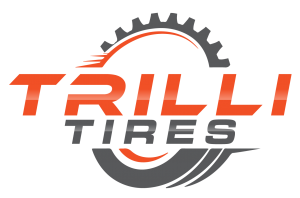Brake rotors are a critical component of a vehicle’s braking system, yet many drivers rarely consider their importance. Understanding how they work, their materials, and maintenance requirements can enhance vehicle safety and performance. This article explores the science behind rotors, providing insights into why they are essential for effective braking.
What Are Brake Rotors?
They are also known as brake discs, and are flat, circular components attached to the wheel hub of a vehicle. When the brake pedal is pressed, the brake pads clamp onto the rotors, generating friction that slows the rotation of the wheels and brings the vehicle to a stop. Rotors work in conjunction with calipers and brake pads to convert kinetic energy into heat, which is then dissipated to prevent overheating.
The design and material play a significant role in their efficiency. Properly functioning rotors ensure consistent braking performance, particularly under demanding conditions such as high-speed stops or winter driving.
Materials and Construction of Rotors
They are typically made from cast iron due to its durability and ability to withstand high temperatures. Some high-performance vehicles use rotors made from carbon composites or ceramic materials, which offer improved heat resistance and lighter weight.
Rotors can be solid or vented. Solid versions are simple discs suitable for standard driving conditions, while vented versions contain internal channels that allow air to flow through and dissipate heat more effectively. This ventilation reduces the risk of brake fade during heavy braking. Understanding the material and design of your rotors helps in selecting the right type for your driving needs.
How Do They Work?
The primary function is to provide a surface for brake pads to create friction. When the brake pedal is applied, hydraulic pressure forces the brake calipers to press the pads against the rotors. This friction converts the vehicle’s kinetic energy into heat, slowing the wheels.
The efficiency of this process depends on the condition of the rotors. Warped, worn, or excessively thin ones can reduce braking performance and increase stopping distances. Regular inspection ensures that they remain within safe thickness limits and are free from damage or excessive wear.
Heat Management
During braking, rotors can reach temperatures of several hundred degrees Celsius. Managing this heat is crucial because excessive temperatures can lead to brake fade, where the brakes lose effectiveness temporarily. Vented and drilled versions help improve heat dissipation, while high-performance materials can tolerate higher temperatures without warping.
Proper maintenance also plays a role in heat management. Rotors that are clean, free of rust, and correctly installed provide better heat distribution and consistent braking performance. Drivers who understand the science of heat transfer can appreciate why regular inspection and maintenance are essential.
Signs of Wear
Recognizing signs of rotor wear can prevent costly repairs and maintain vehicle safety. Common indicators include vibration or pulsation when braking, squealing or grinding noises, visible grooves or cracks on the surface, and reduced braking efficiency.
Monitoring rotor thickness is also important. Manufacturers specify a minimum thickness, and ones worn below this limit should be replaced immediately. Timely attention to these signs ensures that braking performance remains reliable and prevents damage to other components of the braking system.
Maintenance Tips
Maintaining rotors is straightforward but essential. Regularly checking for wear, cleaning the surface to remove debris and rust, and ensuring that brake pads are in good condition all contribute to their longevity.
During routine brake inspections, mechanics often measure rotor thickness and check for warping or cracks. They can be resurfaced in some cases, but severely damaged rotors should be replaced. Proper maintenance ensures optimal braking performance and extends the lifespan of the entire brake system.
The Role of Rotors in Vehicle Safety
Rotors are central to vehicle safety. Efficient ones provide consistent stopping power, which is critical in emergency situations. On slippery or icy roads, well-maintained rotors can reduce stopping distances and enhance control.
Neglecting rotor maintenance increases the risk of accidents. Worn or warped ones can cause uneven braking, pulling to one side, or brake fade. Regular maintenance and timely replacement are key components of a safe driving strategy.
Rotors and Driving Conditions
Different driving conditions can affect rotor performance. Frequent city driving with stop-and-go traffic causes more wear on them than highway driving. Similarly, towing heavy loads or driving in mountainous regions generates additional heat and stress on the braking system.
Selecting the appropriate rotor type for your driving habits is important. Standard ones may be sufficient for typical commuting, while vented or high-performance ones are better suited for demanding driving conditions. Understanding how driving style impacts rotors helps drivers make informed maintenance decisions.
Advances in Rotor Technology
Modern rotors have benefited from technological advancements that enhance safety and performance. Slotted and drilled rotors improve water and gas dispersion, which reduces brake fade in wet conditions. Composite and ceramic ones provide superior heat resistance and lighter weight, contributing to better vehicle handling.
As vehicle technology evolves, rotors continue to play a vital role in ensuring braking efficiency and safety. Staying informed about these advancements allows drivers to choose the best options for their vehicle and driving conditions.
Final Words
Brake rotors are more than just metal discs; they are vital components that convert energy into safe stopping power. Understanding the science behind them, from materials and heat management to wear signs and maintenance, helps drivers appreciate their importance. Proper rotor care enhances safety, extends the lifespan of the braking system, and ensures reliable performance in all driving conditions.
For drivers in Richmond Hill, TrilliTires offers professional rotor inspection, maintenance, and replacement services. Ensure your braking system is fully prepared and schedule an appointment today to keep your vehicle safe and performing at its best.
